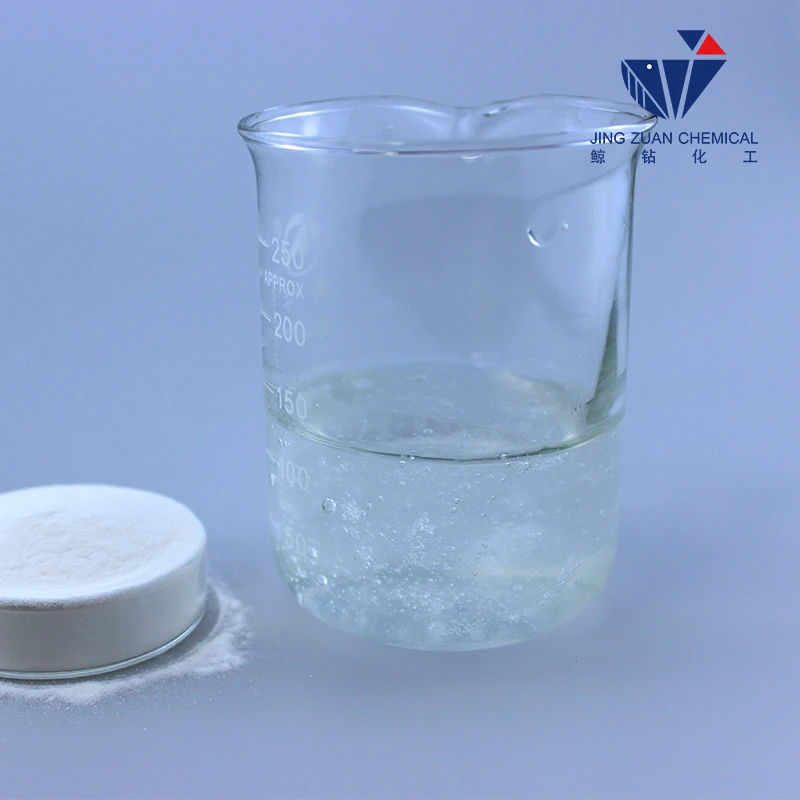
Nov . 22, 2024 06:09 Back to list
methyl hydroxyethyl cellulose
The Versatility of Methyl Hydroxyethyl Cellulose Applications and Benefits
Methyl hydroxyethyl cellulose (MHEC) is a non-ionic, water-soluble polymer derived from cellulose, a natural polymer found in the cell walls of plants. This compound plays a crucial role in various industries, including construction, pharmaceuticals, food, and cosmetics, due to its unique chemical properties. MHEC is particularly valued for its ability to improve the performance of products while enhancing their usability and stability.
Chemical Structure and Properties
MHEC is formed by introducing methyl and hydroxyethyl groups to cellulose. This modification increases its solubility in water, contributes to a thickening effect, and enhances its binding properties. The molecular structure of MHEC allows it to form a gel-like consistency when mixed with water, making it an effective thickening and stabilizing agent. Its rheological properties are influenced by factors such as concentration, temperature, and pH, enabling it to be tailored to fit specific applications.
Applications in Construction
In the construction industry, MHEC is widely used as an additive in mortars, plasters, and tile adhesives. It improves workability, enhances adhesion, and extends open time, allowing workers more flexibility during application. This is particularly important in modern construction where time is of the essence. Moreover, MHEC contributes to water retention in mortars, preventing premature drying and ensuring optimal curing conditions. This property is vital for achieving strong bond strengths and durable materials, making MHEC a key ingredient in high-performance construction products.
Role in Pharmaceuticals
MHEC also finds significant applications in the pharmaceutical industry. Its ability to form gels makes it valuable as a binder in tablet formulations, ensuring uniform distribution of active ingredients. Additionally, MHEC serves as a sustained-release agent, enabling controlled drug delivery over an extended period. This is particularly beneficial for managing chronic conditions where maintaining consistent drug levels in the bloodstream is crucial. Furthermore, MHEC is used in topical formulations as a thickening agent, ensuring a desirable texture for creams and ointments while enhancing their stability.
methyl hydroxyethyl cellulose

Food Industry Utilization
In the food industry, MHEC is increasingly recognized for its contributions as a food stabilizer, emulsifier, and thickening agent. It is often used in sauces, dressings, and ice creams to improve texture and mouthfeel while preventing separation of ingredients. The ability of MHEC to retain moisture is particularly advantageous in baked goods, contributing to a longer shelf life and improved sensory qualities. As consumers become more health-conscious, the demand for natural additives like MHEC has grown, leading to its increased incorporation in various food products.
Cosmetics and Personal Care
The cosmetics industry has embraced MHEC due to its multifunctional properties. It is commonly found in hair conditioners, lotions, and creams where it acts as a thickener and stabilizer. MHEC can enhance the spreadability of products, making them easier to apply while providing a luxurious feel. Its film-forming properties are also utilized in the formulation of hair styling products, providing hold and manageability. Importantly, MHEC is often viewed favorably by consumers as a natural ingredient, aligning with the growing trend toward clean and sustainable beauty.
Environmental and Health Considerations
As an eco-friendly derivative of cellulose, MHEC aligns with the increasing demand for sustainable ingredients across various sectors. It is biodegradable and poses minimal health risks, making it a safe choice for both industrial and consumer applications. The non-toxic nature of MHEC makes it suitable for use in food and pharmaceutical formulations, where safety is paramount.
Conclusion
Methyl hydroxyethyl cellulose is a versatile polymer that significantly impacts various industries. Its unique properties make it an indispensable ingredient in construction materials, pharmaceuticals, food products, and cosmetics. As sustainability becomes a priority, the use of MHEC is expected to grow, continuing to provide innovative solutions that meet consumer and industry demands. Whether enhancing the stability of a cosmetic product or improving the workability of construction materials, MHEC proves itself as a valuable asset, showcasing the potential of natural derivatives in modern applications.
-
Versatile Hpmc Uses in Different Industries
NewsJun.19,2025
-
Redispersible Powder's Role in Enhancing Durability of Construction Products
NewsJun.19,2025
-
Hydroxyethyl Cellulose Applications Driving Green Industrial Processes
NewsJun.19,2025
-
Exploring Different Redispersible Polymer Powder
NewsJun.19,2025
-
Choosing the Right Mortar Bonding Agent
NewsJun.19,2025
-
Applications and Significance of China Hpmc in Modern Industries
NewsJun.19,2025







